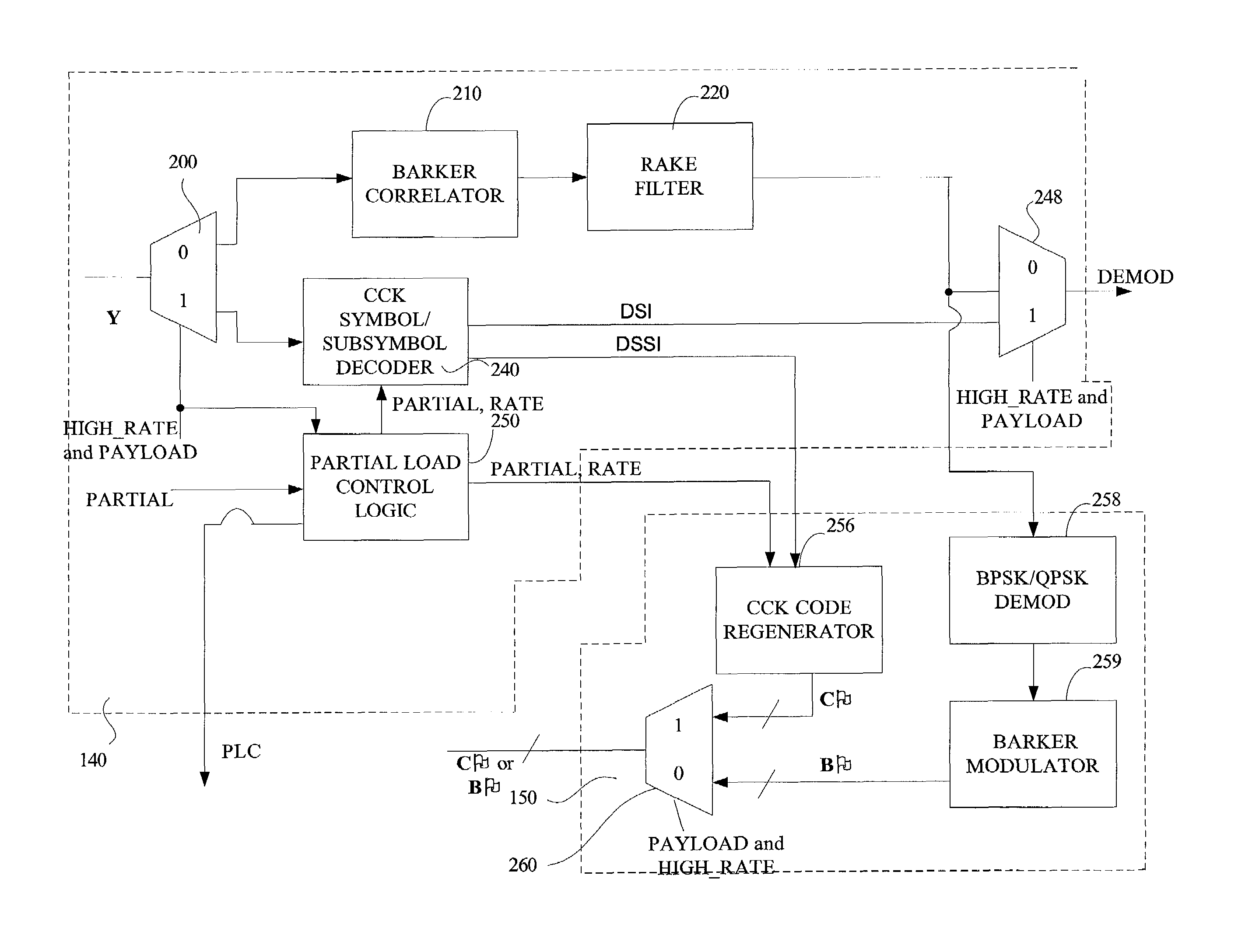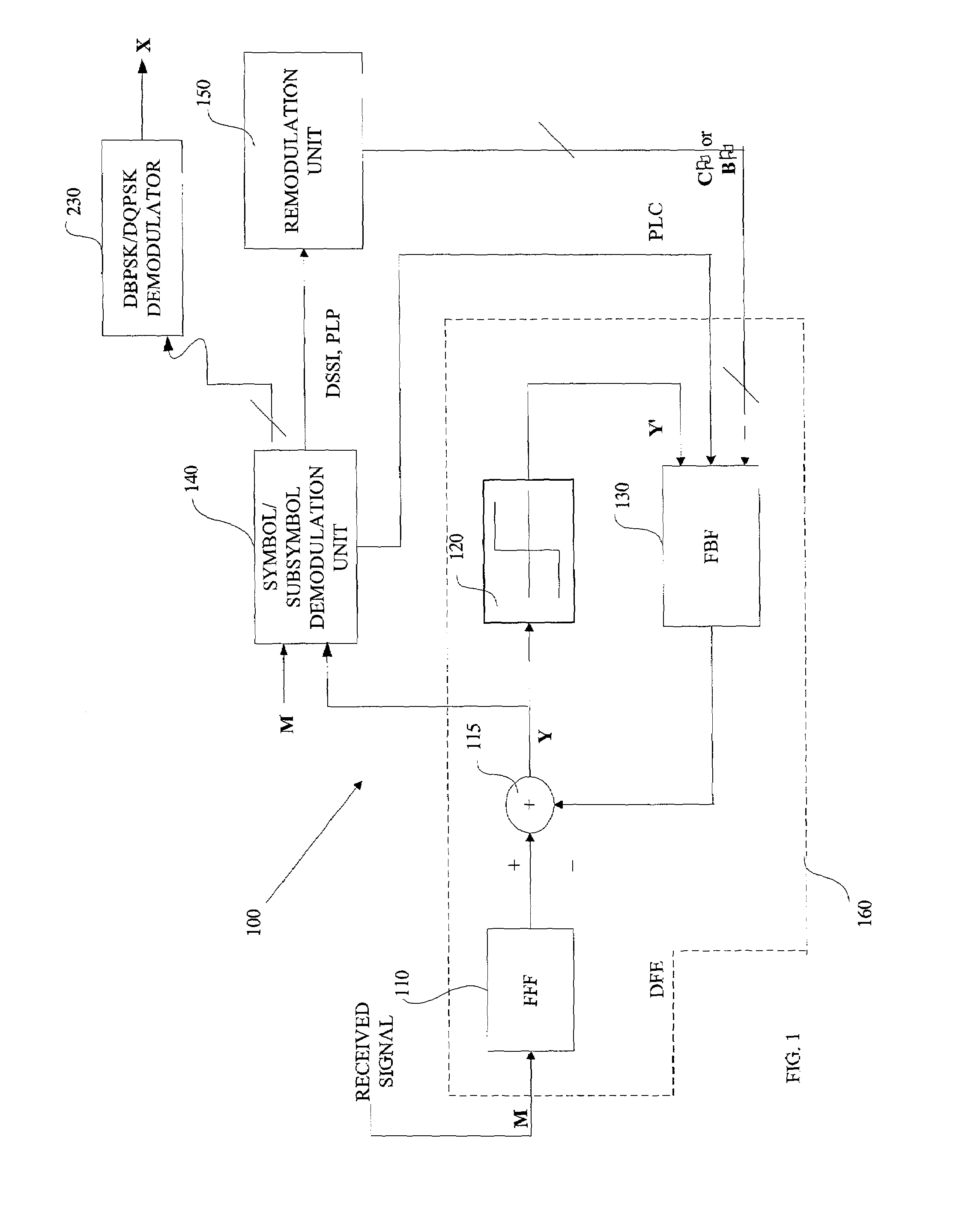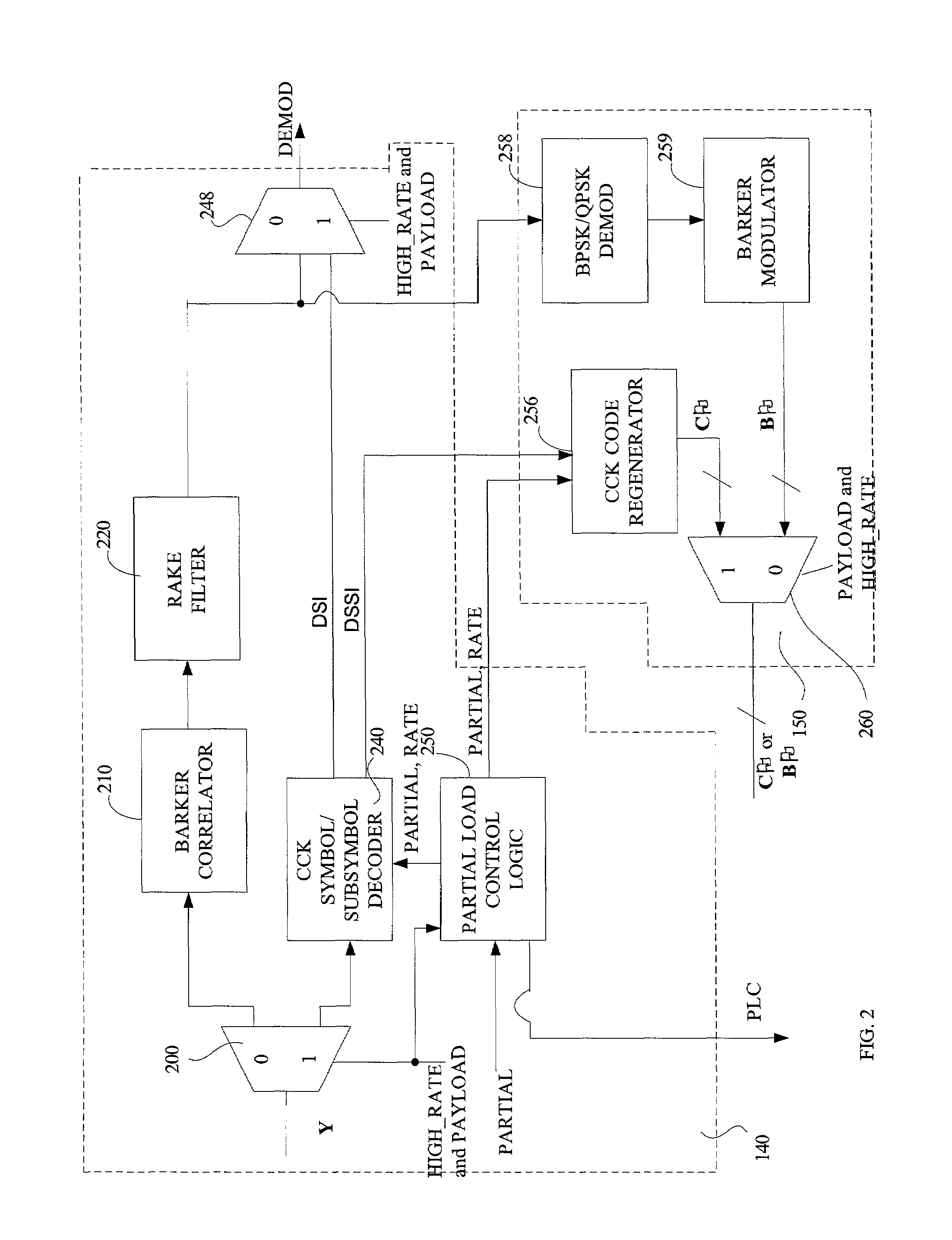Decoding method and apparatus
a modulated information and demodulation technology, applied in the field of decoding modulated information, can solve the problems of demodulation processing, reception errors, and 802.11b remains susceptible to multipath interference, and achieve the effect of improving isi and ici cancellation in reception
- Summary
- Abstract
- Description
- Claims
- Application Information
AI Technical Summary
Benefits of technology
Problems solved by technology
Method used
Image
Examples
Embodiment Construction
[0019]Turning first to FIG. 1, FIG. 1 is a high-level block diagram of a decoding unit 100 including a decision feedback equalizer (“DFE”) 160, symbol / subsymbol demodulation unit 140 and remodulation unit 150 in accordance with a first embodiment of the invention. One purpose of this decoding unit 100 is to decode a signal incorporating one or more modulated coded symbols representing data. Consistent with this purpose, feed forward processing is employed to help ensure that a received, coded symbol modulated baseband signal possesses the minimum phase characteristics to permit symbol demodulation. In turn, decision feedback analysis complemented with selective subsymbol and / or symbol decoding is employed to mitigate inter-symbol and inter-chip interference produced at least in part by the noise enhancing effects of such feed forward processing and thus achieve equalization. This leads to improved receiver performance in noisy environments, especially where multipath interference su...
PUM
 Login to View More
Login to View More Abstract
Description
Claims
Application Information
 Login to View More
Login to View More - R&D
- Intellectual Property
- Life Sciences
- Materials
- Tech Scout
- Unparalleled Data Quality
- Higher Quality Content
- 60% Fewer Hallucinations
Browse by: Latest US Patents, China's latest patents, Technical Efficacy Thesaurus, Application Domain, Technology Topic, Popular Technical Reports.
© 2025 PatSnap. All rights reserved.Legal|Privacy policy|Modern Slavery Act Transparency Statement|Sitemap|About US| Contact US: help@patsnap.com



